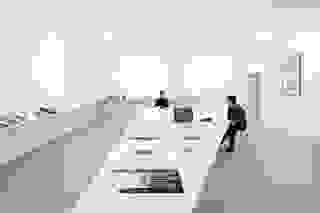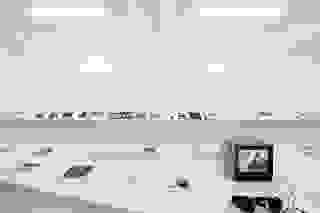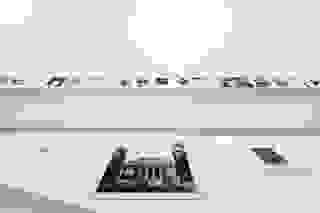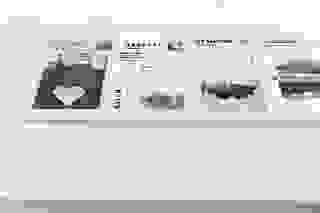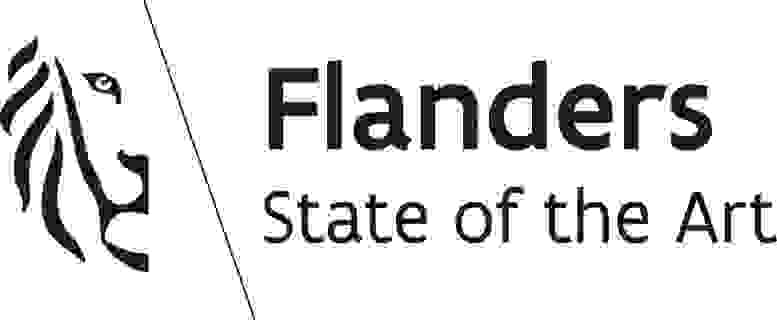Jef Geys
Kempens Informatieblad
26.01.–31.03.19Jef Geys, Kempens Informatieblad, exhibition view, Künstlerhaus Bremen, 2019. Photo: Fred Dott
Jef Geys, Kempens Informatieblad, exhibition view, Künstlerhaus Bremen, 2019. Photo: Fred Dott
Jef Geys, Kempens Informatieblad, exhibition view, Künstlerhaus Bremen, 2019. Photo: Fred Dott
Jef Geys, Kempens Informatieblad, exhibition view, Künstlerhaus Bremen, 2019. Photo: Fred Dott
Jef Geys, Kempens Informatieblad, exhibition view, Künstlerhaus Bremen, 2019. Photo: Fred Dott
Jef Geys, Kempens Informatieblad, exhibition view, Künstlerhaus Bremen, 2019. Photo: Fred Dott
Jef Geys, Kempens Informatieblad, exhibition view, Künstlerhaus Bremen, 2019. Photo: Fred Dott
This exhibition focuses on the Kempens Informatieblad, a newspaper published by Belgian artist Jef Geys between 1971 and 2018, which he used to distribute information as well as to document and discuss his artistic activities in the broadest sense. For the first time, the presentation brings together all issues of Kempens Informatieblad and Kempens Informatieboek, which have been published in parallel since 2012, and makes them accessible for viewing and research, accompanied by a selection of artworks and archival material.
Jef Geys (1934-2018) lived in the Flemish town of Balen in the Campine region, which frequently formed the point of departure and reference for his work, and therefore was often the editorial headquarters and production site of Kempens Informatieblad. From this peripheral position, he developed an artistic practice characterized by local engagement, an often tongue-in-cheek conceptualism, as well as a questioning of conventions and authorities in and outside the art world. In his work, which comprises photography, painting, sculpture, film, installation, and experimental approaches to pedagogy in addition to the publishing activities on focus here, he dealt with the functioning of art and its institutional forms. Through strategies of subversion and camouflage, which, as he said, could only take place “within the system,” he opened up his own ethical and practical space for possibilities of artistic work by testing and indicating the rules of the “game.” Geys generated a constantly growing archive of traces of his personal and professional everyday life. His works were often conceived against the backdrop of this archive and were continuously reproduced and recombined by him. In his works, Geys not only examined the value and status of art, artwork and artist, but also addressed socio-political issues such as questions of class or gender.
After studying art in Antwerp, Geys taught Positive Aesthetics at the local school in Balen from 1960 to 1989, a subject he created. As part of the curriculum, he exhibited loaned works by contemporary artists such as Roy Lichtenstein or Piero Gilardi in his laboratory-like classroom and took his students on an excursion to the studio of Marcel Broodthaers. Since the early 1960s, in addition to his interlocking artistic and pedagogical work, Geys had also been involved in the production and distribution of a local newspaper, the Kempisch Reklaamblad, on whose pages he began to publish various textual and pictorial material among the advertisements placed therein. After it was discontinued, Geys took over the paper and continued it under his own direction as Kempens Informatieblad. The newspaper superimposed the artistic and the everyday, the one disguised as the other and thus not estranged but brought closer together. Over the years, he increasingly entangled regional and international publics, letting their economies of attention run counter to each other.
The first issue of Kempens Informatieblad was published on March 27, 1971. The cover depicts a self-portrait of the artist with his iconic heart shape, bureaucratically emblazoned with the numerical series drawn from his passport and other identity documents. The newspaper was published in connection with a solo exhibition at the Koninklijk Museum for Schone Kunsten in Antwerp (KMSKA). When Geys had been invited the year before, he responded by proposing that the museum be blown up. He later exhibited the concept and instructions of the project as well as the documentation of the reactions it elicited. Accompanying the show was the publication of the first issue of the newspaper, which, in addition to photographs of the museum illustrating Geys’ proposal, contained an interview with the artist as well as an extensive catalog raisonné. Geys took up this first issue in 1972 with the publication of the kreatief: A publication subtitled as “a ‘novel’ about motivation and reality.” It contained an expanded list of his works, provided with a commentary by the artist himself. These continuously updated lists of works can be found repeatedly in the Kempens Informatiebladen.
As an alternative to the conventional artist catalog, the issues, over 50 in total, were mostly published in connection with his exhibitions. They were distributed freely or for little money after initially being distributed door-to-door in Balen, as the preceding publication had been. The Kempens Informatiebladenalso found their way into works and exhibitions by other means. For example, printing plates and proofs were shown, or walls were papered with the pages of the newspaper. After a long pause of publishing, the Kempens Informatieblad became a central component of his artistic practice in the late 1980s. As an information system directed by the artist, it successively developed into a kind of meta-medium within his practice, through which he himself organized his representation and mediation – beyond the exhibition context.
Curated by Gloria Hasnay and Moritz Nebenführ in collaboration with Nadja Quante

